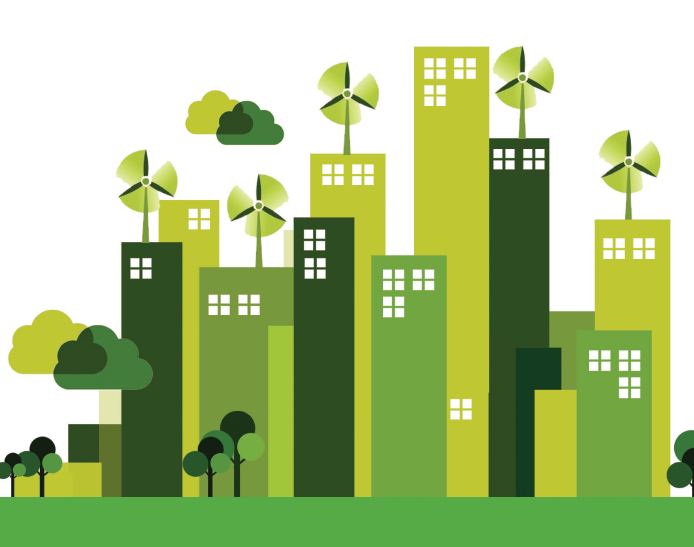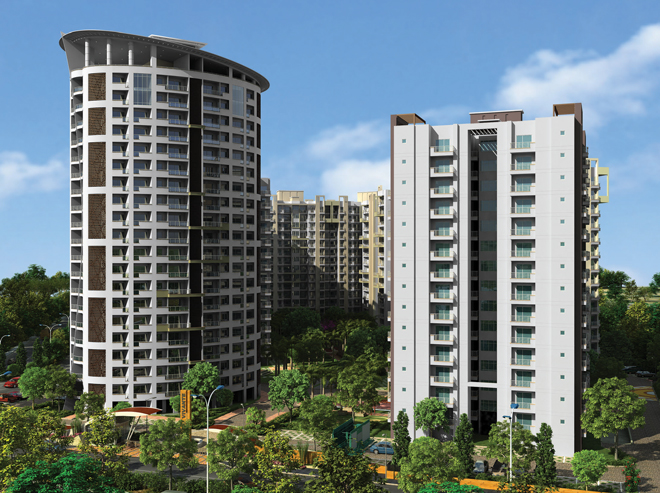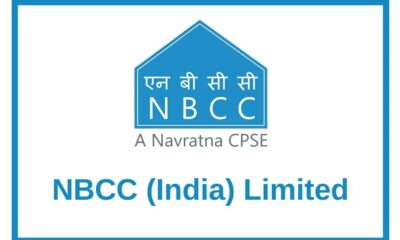Bytes
GREEN RUSH


The whole world is going green and so are we. With growing awareness on conservation, ‘green buildings’ are realty world’s latest buzzword in various metros, cities, and also across many Tier-11, Tier- I l l cities and smaller towns. Because of its inherent philosophy of sustainability and optimisation of resources, the move to ‘green’ buildings is fast catching the fancy of developers, home buyers and corporates a like,
Over the last three years, there has been widespread acceptance of green building norms as more and more people have realized the importance their positive impact on the quality of life. To satisfy their needs and to be an active participant in the green movement, developers have been quick to adopting green norms in their ongoing and new projects, particularly in various metros and big cities across the country and also in smaller cities and towns.
A green building, as defined by the Indian Green Building Council (IGBC), a body involved in promoting the green building movement in the country, is one which uses less water, optimises energy efficiency, conserves natural resources, generates less waste and provides healthier spaces for occupants as compared to a conventional building.
The popularity of green buildings has also been necessitated due to depleting water levels and natural conservation zones like forests, water bodies and wasteland and rising energy consumption.
Besides, according to a report, while energy consumption in the country is about 3 per cent of the world’s total, the demand for electricity has been growing at an average rate of 7-8 per cent.
Therefore, it should surprise none that different stakeholders involved in the real estate sector have started taking necessary steps to promote the concept of green buildings in the country.
While developers are overlooking the cost factor to ensure their projects meet the highest environmental standards, the authorities are offering multifarious incentives to encourage them do so. Homebuyers and corporates interested in office space are becoming increasingly insistent on the buildings they occupy meeting the green norms.
Therefore it is heartening when latest statistics say that at present, Noida has nearly 80 green buildings, while 80 per cent of the ongoing constructions are based on the green concept. A top official of the Noida Authority said: “The city is set to become a hub of green buildings in a few years. The Authority had introduced the concept in 2010, but then it had received a lukewarm response from developers”.


Noida Authority OSD Manoj Rai told Realty & More: “We provide 5 per cent additional FAR too all those projects that are rated green. Recently in the last board meeting, Noida Authority also accorded sanction to IGBC. So far only GRIHA & LEED were valid. Here, we introduced a change in our building bylaws and made IGBC certification officially valid for green certification in Noida. So anybody who gets green building certification, will get benefit of additional FAR free of cost.”
Said PC Gupta, CEO, Yamuna Expressway Industrial Development Authority (YEIDA): “We are implementing the green building norms for all our new constructions. Currently, the construction is on for one-room set affordable houses, and also one and two-room set LIG, which will all be green buildings”. On the cost differential as compared to conventional buildings, he said: “This is a mindset. Otherwise, there is not much difference in costing. “
Nor is the Delhi Development Authority (DDA) much far behind in promoting green buildings. It has already proposed incentives ranging from 1 per cent to 5 per cent in FAR for green buildings.
DDA Vice-Chairman Balvinder Kumar told Realty & More: “We have entrusted the IGBC for preparing the draft regulations and once we get it we will go for more consultations so that we can finalise our regulations and then bylaws for incentivising through greater FAR of 1 -5 per cent for those who adhere to green building norms.”
Kumar expects that it would take two to three months’ time to formulate these regulations and bylaws. He adds that in its role as a developer too, the Authority has decided that “all buildings, all projects which DDA is going to implement, would be based on the principle of green buildings.
LEED AND GRIHA
The IGBC has adopted LEED (Leadership in Energy and Environmental Design), an internationally recognized green building certification system for the design, construction, operation, and maintenance of green buildings, homes and neighbourhoods. It has launched LEED provides thirds party verification that a building or community was designed and built using strategies aimed at improving performance across all the metrics that matter most. Energy savings, water efficiency, CO2 emissions reductions, improved indoor environmental quality and stewardship of resources, and sensitivity to their impacts.
Projects that are assessed for LEED Certification earn points on the basis of six broadly defined. LEED credit categories. Projects are rewarded LEED points for complying with these specific green building criteria as well as satisfying particular pre-requisites within the categories. The six LEED categories comprise sustainable sites, water efficiency, energy and atmosphere, materials and resources, indoor environmental quality and lastly, innovation in design.
GRIHA (Green Rating for Integrated Habitat Assessment) is the national rating system of India. Conceived by the Centre for Research on Sustainable Building Science, The Energy and developed jointly with the Ministry of New and Renewable Energy (MNRE), GRIHA evaluates the environmental performance of a building over its definitive standard for what constitutes a green building.


MANOJ RAI, OSD. Noida Authority


BALVINDER KUMAR, Vice-Chairman, DDA


PC GUPTA, CEO, Y EIDA


RK PACHAURI, Director-General, TERI


PREM CHAND JAIN, Chairman, IGBC


The IGBC, a part of the CII-Godrej Green Business Centre, is actively involved in promoting the green building movement in the country. The industry-led, consensus based and member-driven council is represented by all stake holders of construction industry comprising corporates, Government and nodal agencies, architects, product manufacturers and institutions, etc.
Emphasising the imperative need for development of high performance buildings in India, RK Pachauri, director general, TERI, has been quoted as saying: “Several studies have estimated that most of the buildings projected to be standing in 2030 in India have yet to be built. The demand for energy, water and other inputs for these buildings and those that already exist will be staggering. Designing and constructing ‘green’ buildings would ensure that India, and the world, do not get locked into a pattern of resource use intensity that would be unsustainable for a variety of reasons.”
IGBC is reasonably delighted with the progress of the green building movement in the county. According to its chairman Prem Chand Jain, the country now has 1 .65 billion sq feet of registered green buildings out of which over half is accounted for by the home segment. Apart from green building norms for new buildings, the IGBC has come out with norms for existing buildings, which has caught on with the people.
Brushing aside apprehensions regarding cost escalation, Jain has been quoted in a recent interview: “The costs have gradually come down from a high of 1 5 per cent over a conventional building to close to 2-3 per cent when it comes to green buildings . . . In about two to three years, there won’t be any cost differential for green homes, it will become the norm.” When it comes to homes, there is not much difference, he said.
Striking a slightly varied note, Ashok Gupta, CMD of Ajnara India Ltd, said: “Green buildings incur more cost in their construction which ultimately increases the cost of a u nit.” But the most noticeable point, he said, was that the efficiency that green buildings provide saves a lot after two to three years of living. “Therefore, modern day customers and even developers are more inclined towards this concept.”
Gupta said: “We have also executed several green building concepts into our projects like, solar panels, ventilated architectural units, large green open spaces, etc. We have implemented almost all possible features of a green building in most of our projects.”
Large open green spaces, rain water harvesting systems, well-ventilated architecture and installation of solar panels are a few concepts that Ansal Housing is also using in most of its projects. “With increased emphasis for nature and environment across the globe, we believe that green buildings will help in preserving the nature and benefit all,” said Kushagr Ansal, director of the company. Regarding increased FAR, Ansal said: “It is encouraging only till it is been executed from the beginning of the tower. A tower once constructed is built for a specific number of floors. It is very risky to add floors later. “
Sushant Muttreja, CMD, Cosmic Group, had similar reservations regarding the FAR incentive. “It is good that the authorities are promoting the vertical way of construction in NCR. But there will have to be a limit to it as the soil in NCR is softer and Delhi/NCR is in seismic zone 5. Therefore, constructing a tall tower might have its drawbacks. Only on newer building should the FAR must be taken into consideration and never on the already built ones.”




ASHOK GUPTA, CMD, Ajnara India Ltd


KUSHAGR ANSAL, Director, Ansal Housing


SUSHANT MUTTREJA, CMD, Cosmic Group
All these things help in making a project sustainable and we are completely ready to provide such structure in future too. “Anand Raj, CEO, MMR, appreciated the incentives for increased FAR, saying, “It is a welcome move as the land is limited and the developers need to go vertical. By this, they can also allow a project to offer increased number of houses to the people which can ultimately help in checking the housing shortage. “He agrees that though the initial cost incurred on green buildings is higher, “in the long run it pays rich dividends in terms of healthy living and safer environment
A CASE FOR GREEN
According to a recent report released by the NCR Planning Board, between 1999 and 2012, there has been an alarming depletion of natural conservation zones in the National Capital Region. In Delhi, the report says, water bodies shrunk by 22.6 per cent, forests by 15 per cent and wasteland by 11 per cent, while in the NCR, the maximum depletion was in Gautam Budh Nagar with a high 55 per cent shrinks.
According to another report, the energy consumption in the country is about 3 per cent of the world’s total while the demand for electricity has been growing at an average rate of 7-8 per cent. It is reported that the total energy consumption in Indian buildings in the commercial sector is 21.6 billion Kwh (32 per cent for air-conditioners, 60 per cent for lighting, 8 per cent for others); For the residential sector: 36 billion Kwh (35 per cent for lighting, 29 per cent for fans, 7 per cent for coolers, 14 per cent for refrigeration, 4 per cent for air-conditioners, 11 per cent for others).
Therefore, it should surprise none that different stakeholders involved in the real estate sector have started taking necessary steps to promote the concept of green buildings in the country. While developers are overlooking the cost factor to ensure their projects meet the highest environmental standards, the authorities are offering multifarious incentives to encourage them do so. Homebuyers and corporate interested in office space are becoming increasingly insistent on the buildings they occupy meeting the green norms.


ANAND RAJ, CEO, MMR Group


VIBHOR GUPTA, Additional GM, Jaypee Greens


DEEPAK KAPOOR, Director, Gulshan Homz
“All our recent structures are green-based. We have wide lush green open spaces for ventilation, systematic drainage system for rain water harvesting, solar panels installed and many other features that help us maintain the environment and living,” he added.
According to Vineet Relia, CEO of SARE Homes: “The green building concept is new in India. It is at a nascent stage and there is lack of awareness regarding the outcome about its positive aspects. Keeping in mind the long-term objectives for energy conservation and resource depletion, the concept is bound to succeed in the near future”.
Relia admits that development of green building initially costs more but at the same time if one looks ahead, it helps in curtailing cost in terms of energy conservation and durability and reduces the lifetime cost of the building.
An excited Deepak Kapoor, Director, Gulshan Homz, said: “There are several reasons in a green building that make it more expensive than the conventional ones because of the facilities it provides and its architecture. The former are more expensive initially d u ring construction but helps in reducing t h e bills. Whereas, the latter are the exact opposite case and hence modern day builders and customers prefer green buildings.”
Another developer, Earth Group claimed that since inception, it is committed to implementing green concepts in its projects. Vikas Gupta, J M D of the company, said that on the average, green buildings cost around 5- 1 0 per cent more as compa red to the conventional ones.
Jaypee Greens, as the name itself suggests, has a “strong belief in offering a blend of greenery with modern amenities for a modern yet eco-centric lifestyle”.


VINEET RELIA, CEO, SARE Homes


VIKAS GUPTA, JMD, Earth Group
Vibhor Gupta, Additional G M of Jaypee Greens, told Realty & More that there is generally a hike of 1 5-20 per cent for constructing green buildings a n d the increased cost will be discouraging for some customers who a re price conscious. “But they would have to understand the fact that all this increased cost will be recovered in a span of 8-1 0 yea rs due to energy saving and all their efforts will be beneficial for generations to come”, he said.
Green buildings may take a little more time in getting off the drawing board as the plans would be made keeping the best practices and norms in consideration besides compliance aspects. But the spinoffs would be, as Jaypee’s Gupta sums it: “More transparency, self-sufficient buildings and happier customers.
-



 News3 weeks ago
News3 weeks agoKW Delhi 6 Mall Onboards New Brands
-



 News4 weeks ago
News4 weeks agoManasum Senior Living Launches IKIGAI GOA, A Senior Living Community in North Goa, in collaboration with Prescon Homes
-



 News2 weeks ago
News2 weeks agoGodrej Properties Sells Rs 3k cr+ Homes of Godrej Zenith, Gurugram, within 3 days
-



 News4 weeks ago
News4 weeks agoBridging India Divide: Top 5 Tier- 2 Cities to Focus On
-



 News3 weeks ago
News3 weeks agoCommercial Realty Gets Tech Savvy: Fast Construction, Enhanced Convenience
-



 News4 weeks ago
News4 weeks agoMultipoint Connection – A Definite Boon
-



 News3 weeks ago
News3 weeks agoRBI’s Status Quo on Key Policy Rates to Help Maintain the Real Estate Growth Momentum, Say Industry Stalwarts
-



 News1 week ago
News1 week agoOlive Announces Dhruv Kalro as Co-Founder






























